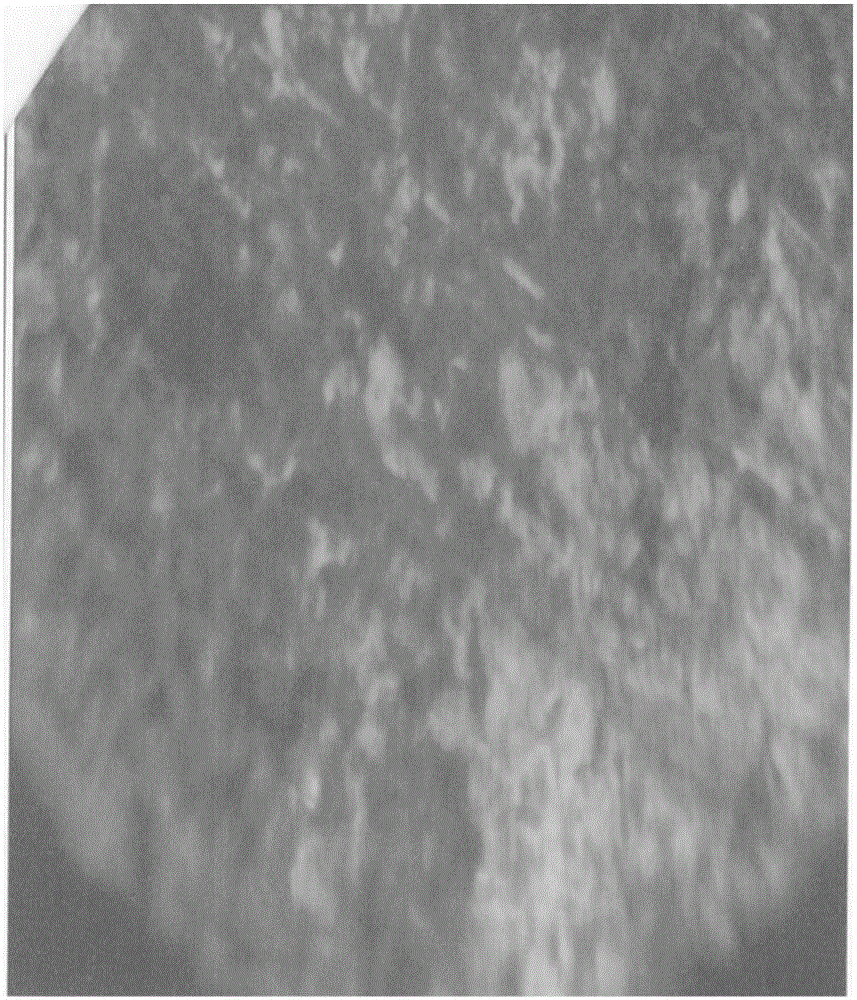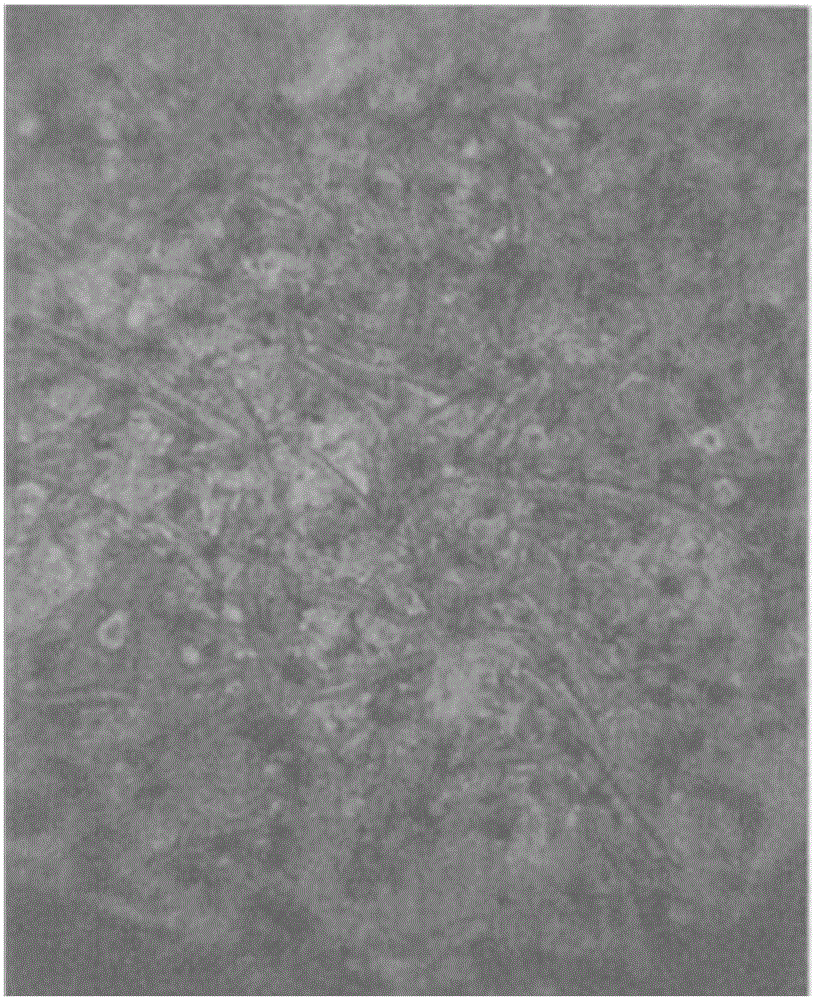High-wear-resistance carbide-containing austenitic ductile iron and preparation method thereof
A technology of nodular cast iron and high wear resistance, applied in the field of wear-resistant materials, can solve the problems of high chromium nonconformity, groundwater pollution, low quality, etc., and achieve the effects of good work hardening ability, prolonging service life and reducing wear
- Summary
- Abstract
- Description
- Claims
- Application Information
AI Technical Summary
Problems solved by technology
Method used
Image
Examples
Embodiment 1
[0019] 1) Weigh the raw materials according to their elemental composition. The elemental composition is calculated as C: 3.50~3.90%, Si: 2.90~3.5%, Mn: 1.30~1.70%, P<0.08%, S:<0.012%, RE: 0.01~0.04%, Mg: 0.025~0.04%, Cr: 0.08~0.18%, V: 0.17~0.32%, Ti: 0.08~0.18%, Cu: 0.30~0.40%, B: 0.001~0.006%, more The amount is Fe.
[0020] 2) Put the above-mentioned raw materials into an intermediate frequency electric furnace to heat and melt in order to obtain ausferrite nodular cast iron raw iron liquid with a furnace temperature of 1550℃-1500℃;
[0021] 3) Inverted ladle spheroidization, pour the molten iron into the spheroidizing agent and inoculant bag, spheroidize, and then pouring and molding. After cooling to a certain temperature, pour the workpiece out of the mold and proceed The castings are separated and inspected. The main items to be inspected are cracks, heavy skins, pores, sand holes, shrinkage holes, shrinkage porosity, slag inclusions, cold partitions, and metallography of ...
Embodiment 2
[0024] 1) Weigh the raw materials according to their elemental composition. The elemental composition is calculated as C: 3.50%, Si: 2.90%, Mn: 1.30%, RE: 0.01%, Mg: 0.025, Cr: 0.08%, V: 0.17. %, Ti: 0.08%, Cu: 0.30%, B: 0.001%, and the balance is Fe.
[0025] 2) Put the above-mentioned raw materials into an intermediate frequency electric furnace to heat and melt in order to obtain ausferrite nodular cast iron raw iron liquid with a furnace temperature of 1550℃-1500℃;
[0026] 3) Inverted ladle spheroidization, pour the molten iron into the spheroidizing agent and inoculant bag, spheroidize, and then pouring and molding. After cooling to a certain temperature, pour the workpiece out of the mold and proceed The castings are separated and inspected. The main items to be inspected are cracks, heavy skins, pores, sand holes, shrinkage holes, shrinkage porosity, slag inclusions, cold partitions, and metallography of the castings. Those with severe burrs should be polished, and the cas...
Embodiment 3
[0029] 1) Weigh the raw materials according to their elemental composition. The elemental composition is calculated as C: 3.90%, Si: 3.5%, Mn: 1.70%, P: 0.08%, S: 0.012%, RE: 0.04%, Mg: 0.04%, Cr: 0.18%, V: 0.32%, Ti: 0.18%, Cu: 0.40%, B: 0.006%, and the balance is Fe.
[0030] 2) Put the above-mentioned raw materials into an intermediate frequency electric furnace to heat and melt in order to obtain ausferrite nodular cast iron raw iron liquid with a furnace temperature of 1550℃-1500℃;
[0031] 3) Inverted ladle spheroidization, pour the molten iron into the spheroidizing agent and inoculant bag, spheroidize, and then pouring and molding. After cooling to a certain temperature, pour the workpiece out of the mold and proceed The castings are separated and inspected. The main items to be inspected are cracks, heavy skins, pores, sand holes, shrinkage holes, shrinkage porosity, slag inclusions, cold partitions, and metallography of the castings. Those with severe burrs should be pol...
PUM
 Login to View More
Login to View More Abstract
Description
Claims
Application Information
 Login to View More
Login to View More - R&D
- Intellectual Property
- Life Sciences
- Materials
- Tech Scout
- Unparalleled Data Quality
- Higher Quality Content
- 60% Fewer Hallucinations
Browse by: Latest US Patents, China's latest patents, Technical Efficacy Thesaurus, Application Domain, Technology Topic, Popular Technical Reports.
© 2025 PatSnap. All rights reserved.Legal|Privacy policy|Modern Slavery Act Transparency Statement|Sitemap|About US| Contact US: help@patsnap.com


